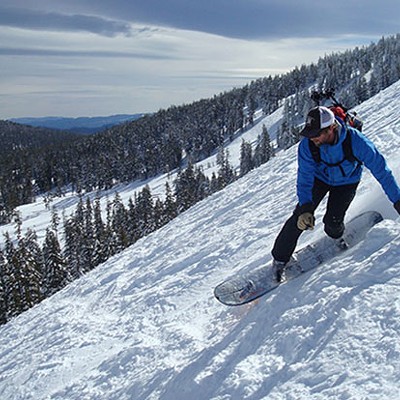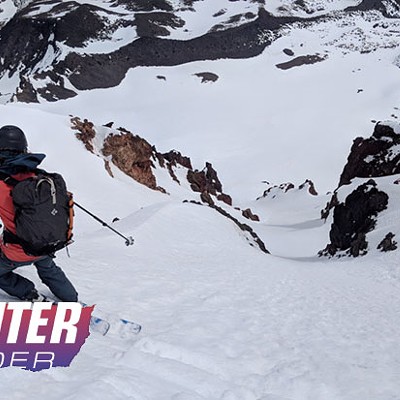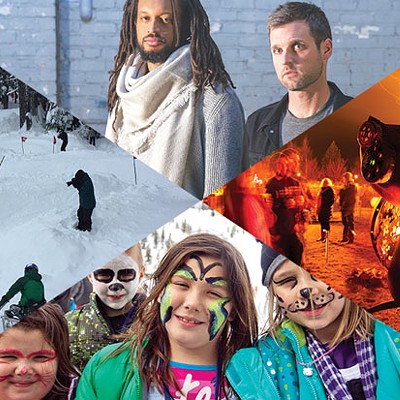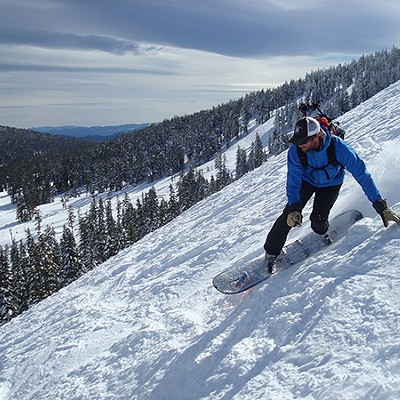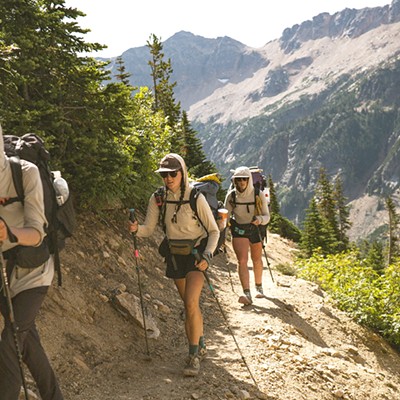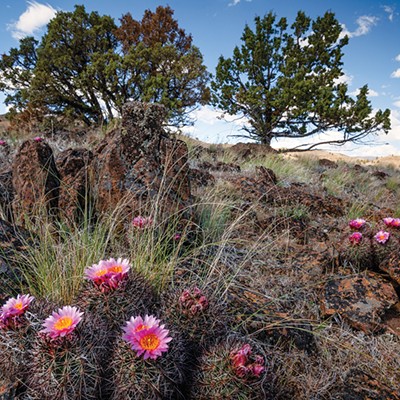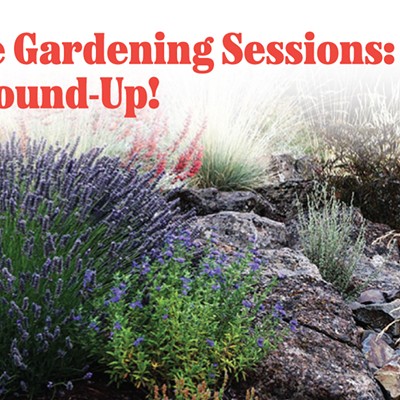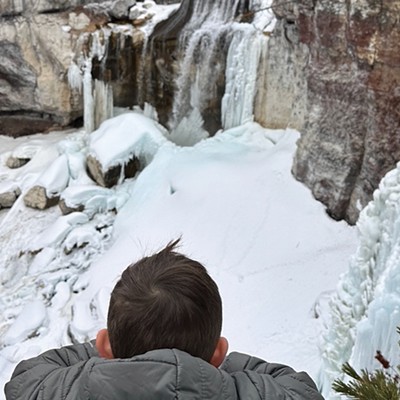On January 15, 1998, Brian Sali, of Yakima, Washington, was with two friends snowmobiling on a high, treeless snowdrift on Paulina Peak in Newberry Crater. On a failed turn, he dismounted his machine to turn it when a football field-sized avalanche swept him about a hundred yards and buried him under five feet of snow. Sali was lucky. His friends were able to locate his machine, use a tree branch probe to locate him and dig him out. Still, doctors estimated he was seconds from death, unable to breath below the covering of snow. Some 16 years later, 28 year-old Wesley Bryan Amos of La Pine wasn't so lucky. Reportedly an accomplished snowmobiler, Amos set out alone near Paulina Peak when he was caught in a 200-yard- wide avalanche south of the Obsidian flow in an area locals call "Roller Coaster." He was trapped and perished. Avalanche tragedies are more widespread than many think. The National Avalanche Center states that "avalanches kill more people in national forests than any other natural hazard." When accidents like this occur, Jon Tapper of Bend takes it personally. Tapper helped found the Central Oregon Avalanche Association in 2009 and serves as the nonprofit organization's vice president. Tapper is an experienced backcountry skier who says that as the sport gained popularity in Central Oregon there was "nothing here to promote avalanche safety and awareness." Tapper and his group are working hard to raise that awareness and make backcountry winter recreation safer for all. One of the goals of the organization is to obtain reliable avalanche forecasts and other data for Central Oregon. The Northwest Avalanche Center in Seattle provides forecast and risk information for the Washington Cascades and around Mt. Hood in Oregon. There is no such information for Central Oregon even though there is for other regions such as the Wallowa Mountains and Mt. Shasta. A long-term goal of COAA is to help obtain the equipment and funding to hire an avalanche forecast expert specifically for the Central Oregon region in cooperation with the National Weather Service and agencies such as the U.S. Forest Service. In the meantime, the Central Oregon Avalanche Association has launched an aggressive campaign to educate a growing number of winter recreational enthusiasts. At the heart of this effort is an avalanche class and video series that teaches the basics of safety awareness. Know before you go or KBYG delves into the gear needed, training in the use of that gear, and in understanding backcountry terrain and weather conditions. The course emphasizes staying out of harm's way. Tapper adds that "99.9 percent of tragedies are unfortunately caused by the victim." COAA has also organized what it calls a Pro Observer Network of four avalanche experts in Central Oregon who post their analysis online each week with a Friday summary for the weekend. Central Oregon, Tapper says, is not known to be as prone to avalanches as other regions such as the Rocky Mountains. But, he continues, "we have windows of danger" that occur with fluctuating rain, snow, warming, and freezing conditions, which can all contribute to unstable snow conditions and an unexpected slide. In 2010, a major slide occurred on the flank of North Sisters, which Tapper estimates was a mile wide. He says as the number of winter recreationists continues to increase and, with more access to our public lands, it's "absolutely critical" that backcountry snow enthusiasts arm themselves with the equipment and the knowledge to avoid catastrophe. The three gear items essential to everyone who ventures into backcountry snow areas are a beacon, a shovel, and a probe to locate and dig victims out. COAA is planning four educational seminars this winter, which include a 75-minute film highlighting the group's motto—Know before you go. These sessions will be held at the Broken Top Bottle Shop, and details can be found on the organization's website. Tapper says COAA is willing to make itself and its resources available to any group wanting to help educate people on winter conditions. The group is also planning a winter get-together at Mt. Bachelor on February 6 and 7, for what it calls VertFest, a weekend of fun vertical events combined with clinics on how to use safety equipment while understanding how to read the terrain and weather conditions to avoid disaster. Further information on the Central Oregon Avalanche Association, including video summaries and other useful information, can be found at coavalanche.org.
[
{
"name": "Air - Ad - Rectangle - 2 pack - Inline Content - 1",
"insertPoint": "1/2",
"component": "16844684",
"requiredCountToDisplay": "6"
}
,{
"name": "Air - Ad - Rectangle - 2 pack - Inline Content - 2",
"insertPoint": "1/4",
"component": "16844686",
"requiredCountToDisplay": "20"
},{
"name": "Air - Ad - Rectangle - 2 pack - Inline Content - 3",
"insertPoint": "3/4",
"component": "16844687",
"requiredCountToDisplay": "17"
}
]

